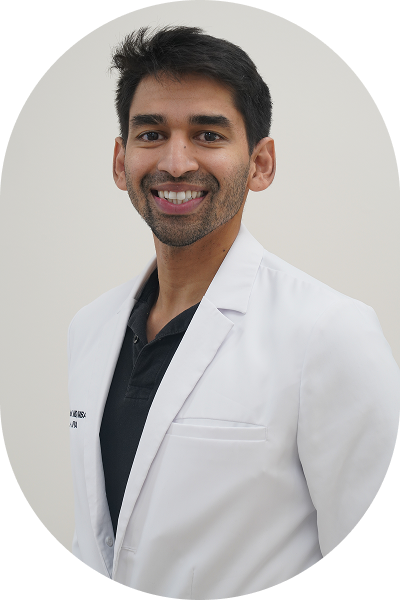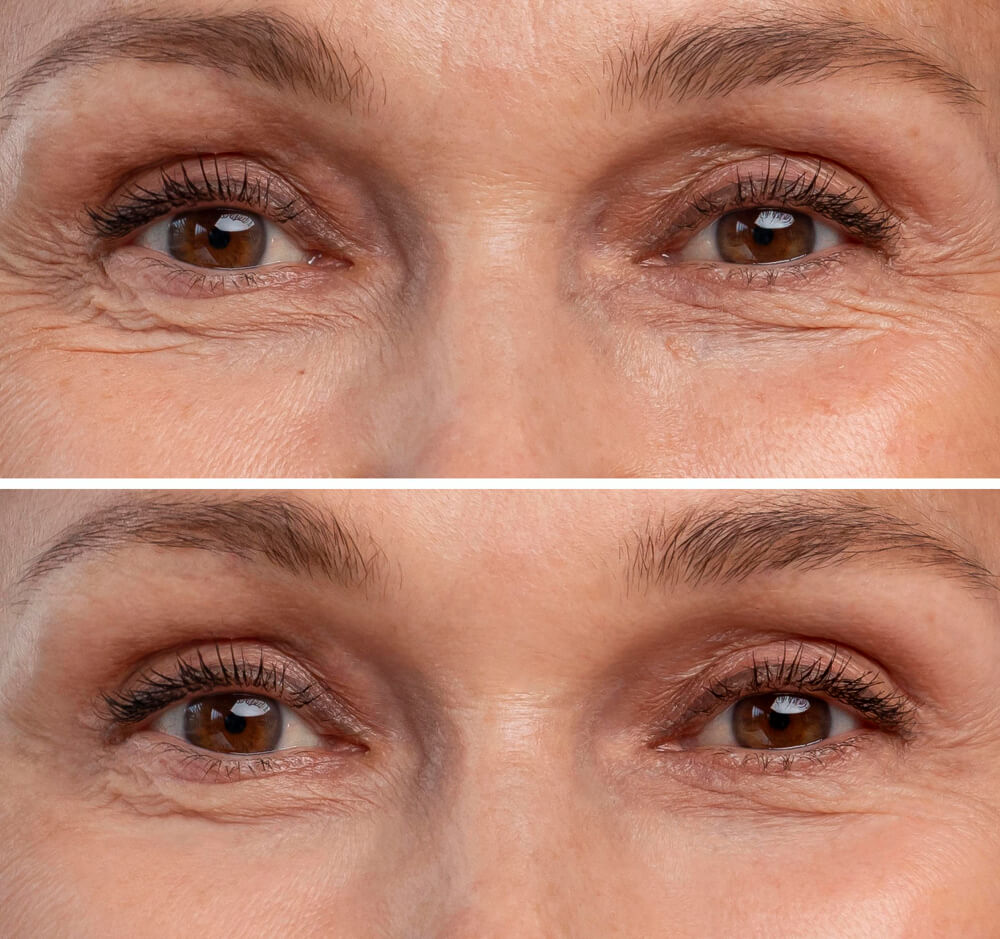Facial Fat Grafting
Top Rated Fat Transfer Surgeon in Raleigh, NC | JIYA
Overview: Facial Fat Grafting
Fat cells on the body tend to collect in certain areas such as the abdomen, thighs, and hips much to the patient’s chagrin. When a patient loses fat in the face, but has fat elsewhere on the body, this can cause them to feel older than they are and disproportionate. Dr. Jindal can take extra fat from other parts of the body and transfer them to the face.
The transfer of human fat is used in several other procedures. It is possible because as long as the transferred fat creates a blood supply in the new area, it will act like all other fat on your body. Not all of the transferred fat will successfully achieve this, but Dr. Jindal accounts for this by handling the fat very gently and using research-proven techniques to improve results.
While technically a surgical procedure, fat transfer to the face does not require full sedation. There are only small incisions—usually less than a centimeter long—in the donor and transfer areas.
Possible Donor & Transfer Areas
- Abdomen
- Thighs
- Under the chin
- Arms
- Bra roll
- Cheeks
- Nasolabial folds (smile lines)
- Temples
- Under eyes
- Lips
- Marionette lines
- Jawline
Benefits
A fat transfer to the face procedure comes with many benefits for adults of all ages. Depending on the areas where fat is transferred, patients may experience slightly different benefits. However, some of the advantages and benefits of a facial fat grafting procedure include:
- Overall younger appearance
- Reduction in fine lines and wrinkles
- Plumper facial features
- Enhanced features at the donor site
- Natural look and feel
- Almost no risk of rejection
- Minimally invasive
- Essentially permanent results
- Little downtime and recovery
- Limited need for pain management
- Performed under local anesthesia
- Small incisions
- Incisions hidden within natural features
- Performed by an experienced oculofacial cosmetic surgeon
Fat Transfer vs. Dermal Fillers
A fat transfer procedure and dermal fillers essentially achieve the same goal. However, one does so without any surgery and no recovery. While this may make it seem like dermal fillers are always the better choice, this is not true in all cases. The table below shows the major differences and considerations to make between both plumping options.
Fat Transfer | Dermal Fillers |
|
|
Either a facial fat transfer or dermal fillers can provide amazing results. Dr. Jindal can help you evaluate each procedure and which is right for you.
Before & After Facial Fat Grafting
Consultation
At a consultation at the Jindal Institute for Youthful Aging, you will meet with Dr. Jindal to discuss if you are a candidate for facial fat transfer. First, he will want to get an understanding of your concerns and what you hope to achieve. From there, he may ask about your medical history and lifestyle. Finally, Dr. Jindal will perform a brief physical exam of the face and potential donor areas.
Ultimately, if Dr. Jindal believes you are a good candidate, he will discuss the donor areas and specifics of the procedure. Otherwise, he may recommend other procedures that may help you see the results you want such as dermal fillers, lower blepharoplasty, Facetite, or a facelift.
Procedure
Dr. Jindal performs Raleigh facial fat grafting surgery under local anesthesia. You may choose to take an oral sedative or have light IV sedation. Dr. Jindal will disinfect the donor area and transfer areas. He will then inject lidocaine into the donor areas and perform liposuction.
Once he harvests enough fat, Dr. Jindal will close the liposuction incision(s) and prepare the fat for transfer. This involves cleaning out impurities and placing it into a syringe for injection into the face. Your face is usually numbed with topical numbing cream, lidocaine, or both to make the fat injections more comfortable.
Dr. Jindal will precisely inject the fat into the targeted areas of the face. The entry points are usually typically a little bigger than one for dermal fillers. Still, they are unlikely to scar and are hidden within the natural contours of the face.
Recovery
Compared to other facial cosmetic surgeries, the recovery for a facial fat transfer is fairly minimal. Immediately after the procedure, you may notice some swelling and redness. Over the next few days, you may also experience some minor pain, especially when moving the face. Visible side effects generally subside within two weeks for most patients.
- Sleep on your back
- Prop up your head when sleeping
- Avoid touching your face
- Limit facial movements
- Wear a compression garment
- Do not partake in strenuous exercise for at least two weeks
- Avoid NSAIDs like ibuprofen and aspirin
- Maintain a good diet
- Stay hydrated
- Do not smoke
- Use ice compresses as advised
Frequently Asked Questions
Essentially, yes. Once the fat takes hold and has a healthy blood supply, it will act like any other fat in your body. Therefore, it remains permanent unless a significant amount of weight is gained or lost. If you lose too much weight after the procedure, the transferred facial fat is susceptible to loss.
If you maintain your weight following Raleigh facial fat grafting, you can expect to enjoy your results for years to come. The procedure can also not prevent future aging which could lead to more facial volume loss.
The amount of fat that survives is largely up to biology. However, there are steps you can take in the weeks after your surgery to promote the best results. The most vital one is to avoid touching and moving the treated areas as much as possible. While it is not possible to not move your face, keeping it minimal and preventing pressure on the injected fat is important to help it create a blood supply.
Also, make sure to eat well and stay hydrated. Eating healthy fats and plenty of protein is beneficial to the healing process and maintaining the fat. Finally, ensure that you attend all of your post-operative appointments and follow other instructions Dr. Jindal gives.

Dr. Sumeet Jindal at the Jindal Institute for Youthful Aging is an accomplished surgeon who performs oculoplastic surgery, facial cosmetic surgery, and non-surgical anti-aging treatments. With experience in both medical and cosmetic facial enhancements, Dr. Jindal is the ideal provider for facial fat transfer surgery. The Jindal Institute for Youthful Aging offers the best facial fat grafting Raleigh provides.
When consulting and treating patients, Dr. Jindal takes a holistic approach that includes treating each patient as an individual. A fat transfer procedure will not suit every patient. Dr. Jindal will take his time to evaluate your needs, health, and lifestyle to recommend the best treatment plan for you.
To learn more and schedule a consultation, call us or reach out online via Price Simulator or contact form.


